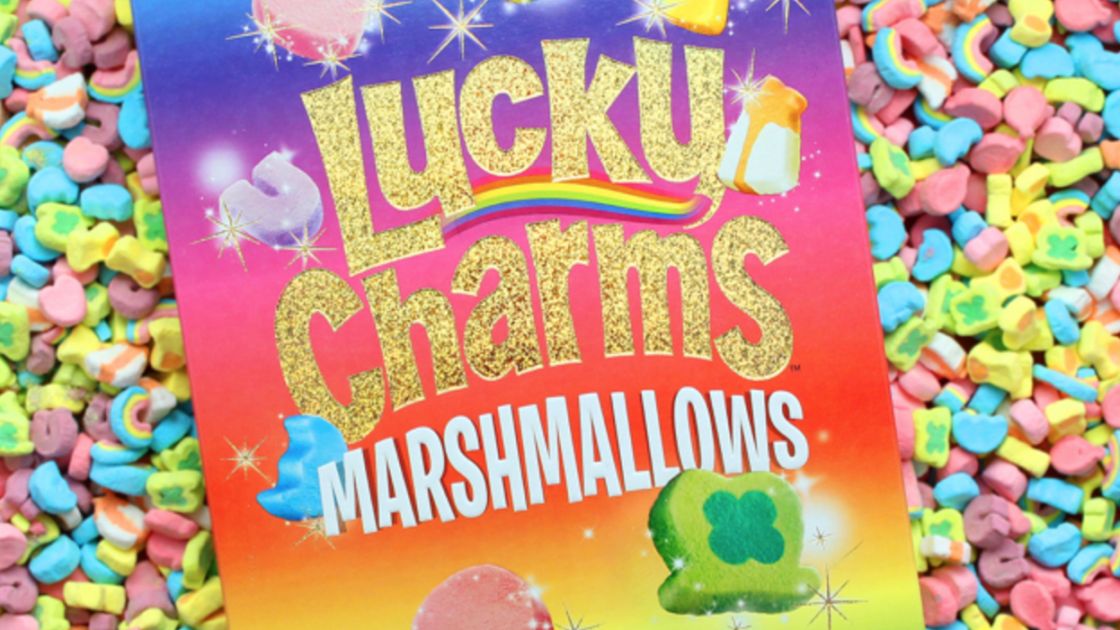General Mills’ All-Marshmallow Lucky Charms are All Artificial Colors and Flavors (and a Day’s Worth of Sugar, Too)

General Mills has released 10,000 boxes of Lucky Charms cereal filled with nothing but marshmallows. The boxes, which can only be won by customers over the next eight months, show a massive change in direction for the maker of Cheerios, which announced two years ago that it would be removing artificial flavors and colors from its cereals by the end of this year.
While General Mills was able to remove artificial ingredients from its other cereals, including Cheerios, Golden Grahams, Reese’s Puffs, and Trix, the effort to remove these colors and flavors from Lucky Charms has stalled, as company scientists have been unable to find natural substitutes that won’t affect the flavor of the cereal. Last month, Quartz reported that between six and seven people were actively working to develop a more natural recipe for the marshmallows every day, to no avail.
“It’s still our biggest challenge,” Mike Siemienas, a Lucky Charms spokesman, told the Washington Post. “We’ll let you know once we’ve found a solution.”
Each six-ounce serving of the limited edition cereal that General Mills is calling “the unicorn of the cereal world” will contain a whopping 22 grams of sugar, nearly the entire daily limit of 25 grams recommended by the World Health Organization.
Participants can enter a code found in specially marked boxes of Lucky Charms online for a chance to win a box.
Experts note that this is just one of many recent attempts by big brands to boost sales by tapping into social media. By creating easily shareable products, such as the marshmallow-only cereal or the equally sugary Starbucks unicorn Frappuccino, brands hope that influencers will share images of their products and therefore contribute to free publicity.
“The strategy is always the same: Generating social media interest by creating something that’s highly shareable just because it’s outrageous,” Kelly O’Keefe, who teaches creative brand management at Virginia Commonwealth University, told the Washington Post. “Companies don’t consider that a lot of those shares come from people saying ‘this is so gross,’ or ‘this is so weird,’ and that ends up undermining the credibility of the brand.”
General Mills offered a similar promotion in 2015 with just ten marshmallow-filled boxes; the new offer is a response to consumer demand for additional chances to win this elusive, sugary prize.
“We know people were disappointed when we did only 10,” Siemienas says. “Now their dreams of having a box full of Lucky Charms marshmallows can come true.”
General Mills has nonetheless recently been taking steps to appeal to the more health-conscious consumer, with a 2016 pledge to label all GMOs in its products and a commitment to grow its organic acreage to 250,000 and its natural and organic portfolio to $1 billion by 2019.
Related on Organic Authority
General Mills’ All-Natural Claims Questioned Due to This Unexpected Ingredient
General Mills and Organic Valley Announce Major Organic Sourcing Partnership
General Mills on Track to Meet $1 Billion Organic Goal

